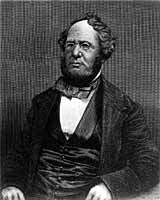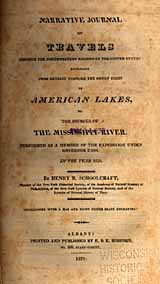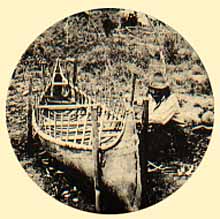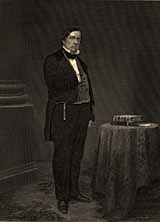

 |
 |
 |
The northwest canoe, is ... constructed wholly of bark, cedar splints, the roots of the spruce, and the pitch of the yellow pine, productions which are common, from the frozen ocean, situated within the arctic circle*, to the parallel of the forty-second degree of north latitude; and these articles are fabricated in a manner uniting such an astonishing degree of lightness, strength, and elegance, and with such a perfect adaptation to the country, and the difficulties of northern voyages, as to create a sentiment of mixed surprise and admiration. Those of the largest size, such as are commonly employed in the fur trade of the north, are thirty-five feet in length, and six feet in width, at the widest part, tapering gradually towards the bow and stern, which are brought to a wedge-like point, and turned over, from the extremities, towards the centre, so as to resemble, in some degree, the head of a violin. ... They are constructed of the bark of the white birch tree, (betula papyracea) which is peeled from the tree in large sheets, and bent over a slender frame of cedar ribs, confined by gunwales, which are kept apart by slender bars of the same wood. Around these the bark is sewed, by the slender and flexible roots of the young spruce tree, called wattap, and also where the pieces of bark join, so that the gunwales resemble the rim of an Indian basket. The joinings are afterwards luted, and rendered water tight, by a coal of pine pitch, which, after it has been thickened by boiling, is used under the name of gum. In the third cross bar from the bow, an aperture is cut for a mast, so that a sail can be employed, when the wind proves favourable. Seats for those who paddle, are made by suspending a strip of board, with cords, from the gunwales, in such a manner, that they do not press against the sides of the canoe. The Fur Companies have lately introduced the use of oars, in propelling the canoe; but the natives employ the cedar paddle, with a light and slender blade. ... In either case, they are steered with a larger paddle, having a long handle, and a broad blade. ... A canoe of this size, when employed in the fur trade, is calculated to carry sixty packages of skins, weighing ninety pounds each, and provisions to the amount of one thousand pounds. This is exclusive of the weight of eight men, each of whom are allowed to put on board, a bag or knapsack, of the weight of forty pounds. In addition to this, every canoe, has a quantity of bark, wattap, gum, a pan for heating the gum, an axe, and some smaller articles necessary for repairs. The aggregate weight of all this, may be estimated at about four tons. Such a canoe, thus loaded, is paddled by eight men, at the rate of four miles per hour, in a perfect calm--is carried across portages by four men--is easily repaired at any time and at any place, and is altogether one of the most eligible modes of conveyance, that can be employed upon the lakes, while in the interior of the northwest--for river navigation, where there are many rapids and portages, nothing that has been contrived to float upon water, offers an adequate substitute. Every night the canoe is unloaded, and, with the baggage, carried ashore; and if during the day, a storm should arise, such is the activity of the Canadian voyageurs, that ten minutes time is sufficient to effect a landing, and secure both vessel and cargo. Recommended by these advantages, we felt an avidity to test them by experience; and, after a long voyage, in which we have had occasion to complain of the confined posture of sitting, and of the frequency of injuring the canoes, by striking against hidden rocks and logs of wood, we have, nevertheless, returned, with an unaltered opinion of their superior utility and adaptation for northern voyages. ... |
 Henry Schoolcraft |

|
||
 |
 Lewis Cass |
* See Hearne's Journey from Hudson's Bay to the Northern Ocean.